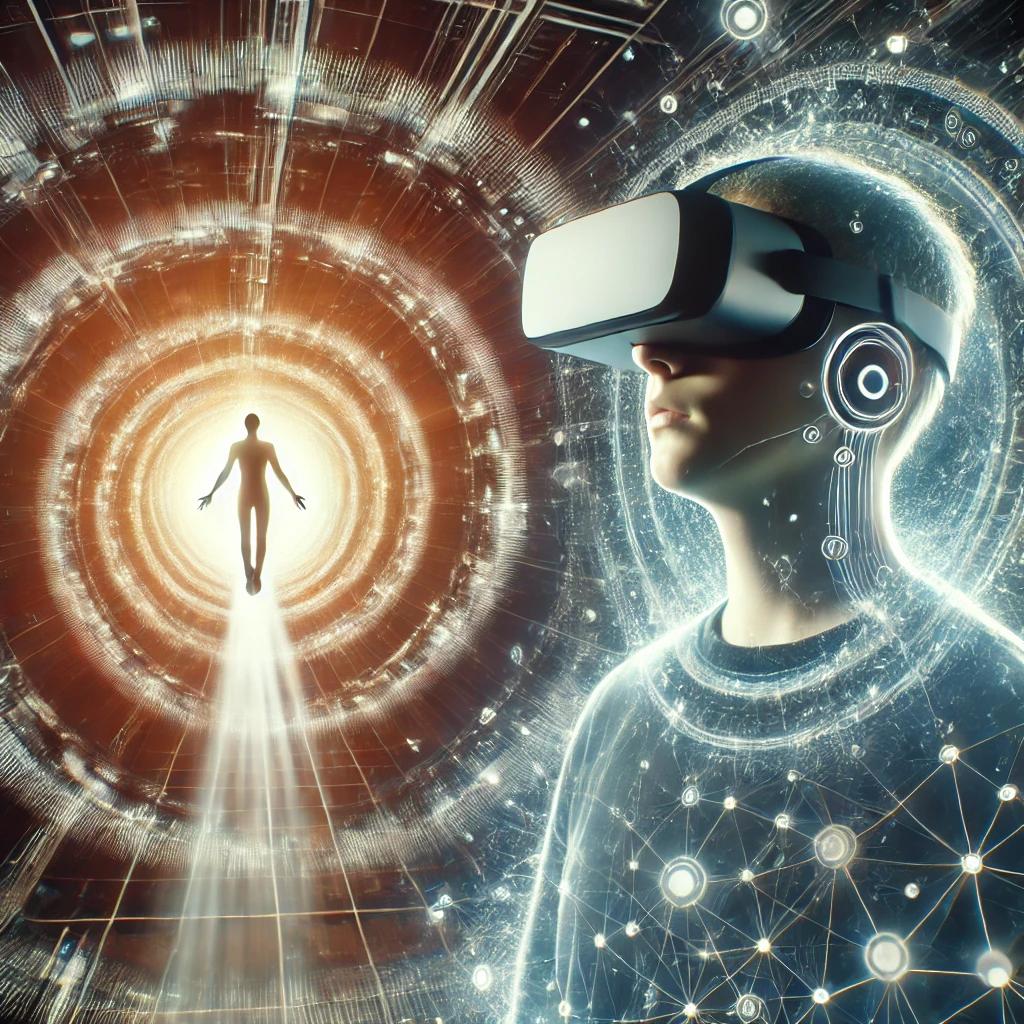Can AI and VR Simulate an NDE? The Future of Consciousness Research

Near-Death Experiences (NDEs) have intrigued scientists, spiritual seekers, and philosophers for centuries. Reports of out-of-body experiences (OBEs), a tunnel of light, and encounters with deceased loved ones raise fundamental questions about consciousness and the afterlife. But what if AI and VR Near-Death Experience Simulation could recreate these experiences?
With technological advancements, researchers are exploring whether simulated NDEs could provide insights into the nature of human consciousness. In this article, we’ll explore the latest developments, potential benefits, and ethical dilemmas surrounding AI and VR Near-Death Experience Simulation.
Understanding NDEs: What Happens During a Near-Death Experience?
A near-death experience (NDE) is a profound, often life-changing event reported by individuals who have been on the brink of death. Some of the most common elements include:
- Out-of-body experiences (OBEs): Feeling detached from the physical body, often seeing oneself from above.
- A tunnel of light: Many describe traveling through a dark tunnel towards a radiant, welcoming light.
- Encounters with spiritual beings: Some report seeing deceased relatives, angels, or even religious figures.
- Life review: A vivid replay of past events, where individuals re-experience key moments of their lives.
- A feeling of peace and unconditional love: Many NDErs (near-death experiencers) describe overwhelming serenity and joy.
Scientific Explanations of NDEs
Scientists believe NDEs could be linked to:
- Oxygen deprivation in the brain, leading to altered perceptions.
- Endorphin release, creating feelings of euphoria and peace.
- Temporal lobe activity, which is associated with spiritual and mystical experiences.
- DMT (Dimethyltryptamine) release, a naturally occurring psychedelic chemical in the brain.
Yet, despite these theories, no single scientific explanation fully accounts for the profound transformation and heightened consciousness reported by many NDErs. This is where AI and VR Near-Death Experience Simulation come into play.
Can AI and VR Simulate a Near-Death Experience?
How Virtual Reality (VR) Is Used to Recreate NDEs

Virtual Reality (VR) is a powerful tool that can immerse users in hyper-realistic, interactive environments. Researchers and tech developers have started using VR to simulate the key elements of an NDE, such as:
- Out-of-body experiences: A VR headset can create the sensation of “floating” above one’s body.
- Tunnels of light: VR technology can simulate the movement through a bright tunnel.
- Encounters with spiritual beings: AI-generated avatars can appear as angels, ancestors, or religious figures.
- Life review simulations: Personalized AI algorithms can recreate meaningful life events based on user data.
Current AI-Powered NDE Simulations
1. Virtual Reality NDE Projects
Several VR experiences have been developed to replicate near-death sensations:
- The Flatliners VR Experience – Based on the movie Flatliners, this simulation recreates OBEs and tunnel-of-light experiences.
- Aware AI’s Consciousness Simulator – Uses machine learning to analyze brainwave activity and generate personalized NDE-like experiences.
- Ayahuasca VR by Antoine Cayrol – A VR experience mimicking the psychedelic visions reported by Amazonian shamans.
2. AI-Generated Hallucinations
AI-driven software can use deep learning algorithms to analyze thousands of real-life NDE accounts and recreate similar visual and auditory hallucinations in VR environments.
3. EEG and Brainwave Mapping
Some researchers are exploring brainwave synchronization using EEG devices to track neural activity during meditation or deep hypnosis. This data is then fed into AI-powered VR systems to enhance the experience.
For more insights on AI’s role in consciousness research, read our article on AI and Consciousness.
Benefits of AI & VR-Induced NDEs
1. Therapy for PTSD and Anxiety
Simulated NDEs could help patients suffering from PTSD, existential anxiety, and fear of death by providing them with comforting, transformative experiences. Studies on psilocybin therapy have already shown that psychedelic-induced NDE-like states help reduce death anxiety in terminally ill patients (Johns Hopkins Medicine).
2. Spiritual Exploration Without Risk
Many people seek profound, life-changing experiences through ayahuasca retreats, deep meditation, or sensory deprivation tanks. AI-powered NDE simulations offer a safe and controlled alternative to explore altered states of consciousness.
3. Advancing Neuroscientific Research
By mapping the brain activity of users undergoing AI-driven NDE simulations, researchers can gain deeper insights into human consciousness and altered states of perception.
For more research on consciousness, check out our article on Consciousness and AI.
Ethical and Philosophical Questions

While the potential benefits of AI and VR Near-Death Experience Simulation are intriguing, they also raise important ethical and philosophical questions:
- Can a simulated NDE ever be considered “real”?
- Would people mistake a VR-induced NDE for an actual spiritual experience?
- Could AI-generated NDEs be used to manipulate religious or philosophical beliefs?
- Is it ethical to charge people for an artificial near-death experience?
Additionally, if AI systems learn to replicate the emotional intensity of real NDEs, could this lead to addiction or detachment from reality?
For more philosophical discussions on NDEs, read The Nature of Consciousness.
Final Thoughts: Are Artificial NDEs the Future?
The intersection of technology, consciousness research, and spirituality is one of the most exciting frontiers of modern science. AI and VR Near-Death Experience Simulation could provide insights into human perception, consciousness, and the nature of reality itself.
However, the question remains: Can technology ever truly replicate the spiritual depth of a real near-death experience? Or will AI-driven NDEs always remain an approximation of something beyond our understanding?
What Do You Think?
Would you try an AI-powered NDE simulation? Do you believe technology can unlock the secrets of consciousness? Share your thoughts in the comments below!
Further Reading:
- Near-Death Experience Research Foundation (NDERF)
- Neuroscience of NDEs – Scientific American
- Psychedelics and Near-Death States – Johns Hopkins Medicine
Stay updated on the latest NDE research at NDEInsights.info!

